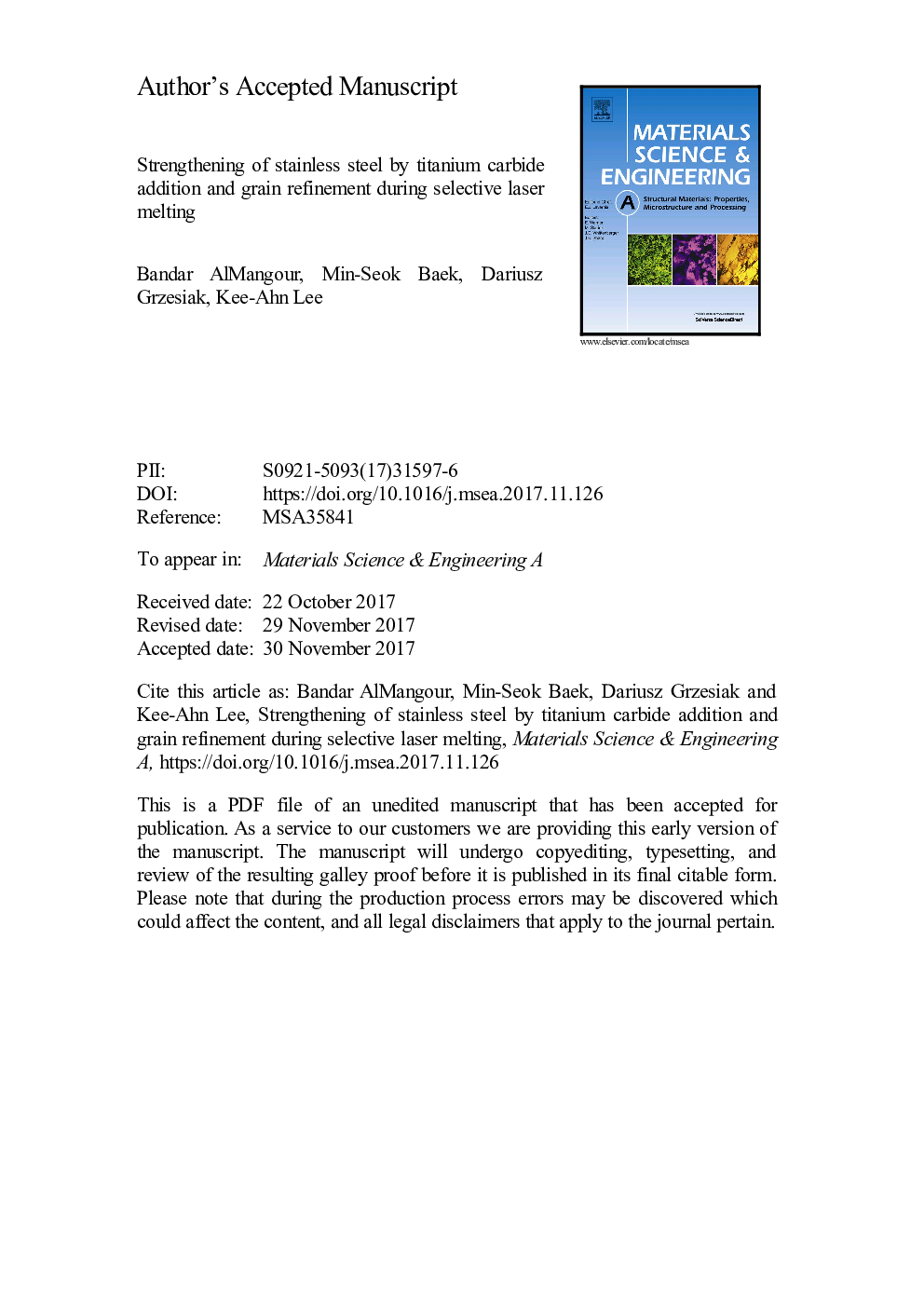| Article ID | Journal | Published Year | Pages | File Type |
|---|---|---|---|---|
| 7974135 | Materials Science and Engineering: A | 2018 | 17 Pages |
Abstract
This study clarifies the role of micro- and nano-TiC added to 316L stainless steel fabricated by the selective laser melting (SLM) process, an emerging additive manufacturing technology, in the microstructural evolution and mechanical properties. Directionally fine cellular dendrites and columnar grains formed during the fast solidification in SLM-processed stainless steel. Interestingly, the addition of TiC particles in the steel matrix significantly reduced the cellular and grain sizes after solidification and also disrupted the established directional structures, particularly for nanoscale TiC. The composite, particularly with nanoscale TiC, also exhibited greater room- and high-temperature compressive yield strengths than unreinforced steel, mainly because of the combined effects of grain-boundary strengthening and Orowan strengthening. The strengthening effect was well described by the Zener pinning model. The compressed surfaces suggest that TiC particles hinder crack propagation, and the TiC distribution was critical in improving the mechanical properties. The SLM process can tailor the microstructure across a rather limited length scale; hence, to better control the mechanical properties of the resulting products, compositing the relevant feedstock powder is a highly attractive strategy for developing components with novel structures and unique properties.
Keywords
Related Topics
Physical Sciences and Engineering
Materials Science
Materials Science (General)
Authors
Bandar AlMangour, Min-Seok Baek, Dariusz Grzesiak, Kee-Ahn Lee,
